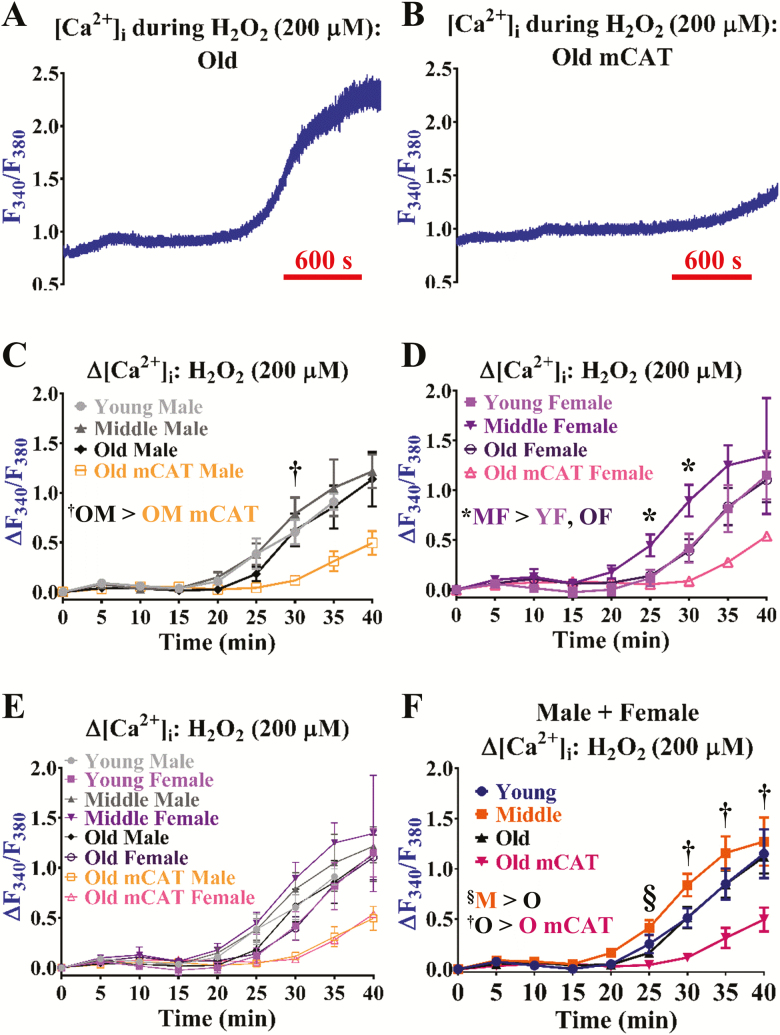Figure 5.
Aging does not significantly alter H2O2-mediated oxidative control of Ca2+ signaling underlying EDH. Representative recordings of [Ca2+]i during H2O2 (200 µmol/L; general oxidizing agent, indirect activator of transient receptor potential and K+ channels) in an isolated endothelial tube of an (A) old male C57BL/6 and (B) old male mCAT mouse, respectively. (C) Summary data for ΔF340/F380 as a function of age (Young, Middle, Old) according to male sex. (D) As shown in (C) for females. (E) Summary data for ΔF340/F380 during H2O2 as a function of age (Young, Middle, Old) and sex (Male, Female). (F) As shown in (E) as a function of age only (sexes combined). n = number of cerebral endothelial tubes (Young, Middle, Old, Old mCAT: 6, 7, 8, and 6 Males and 7, 8, 7, and 1 Females; combined for age only: 13, 15, 15, and 7). †p < .05, Old C57BL/6 versus Old mCAT groups. *p < .05, Middle versus Young and/or Old Females; §p < .05, Middle versus Old age; OM mCAT: Old male mCAT. YF: Young female; MF: Middle female; OF: Old female; M: Middle-age mice; O: Old age mice; O mCAT: Old age mCAT mice. Note highest [Ca2+]i responses during middle age with similarities between young and old C57BL/6 in particular. Responses to H2O2 were significantly lower in mCAT versus C57BL/6 animals.

